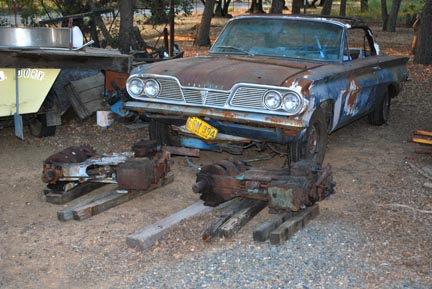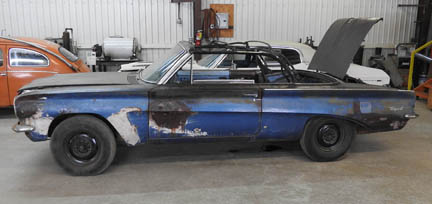1962 Pontiac Tempest
It Has Arrived
The car after several days of wire brushing to remove rust and scale. It sits nice on its new rubber. There are only a few holes in the floor pan. |
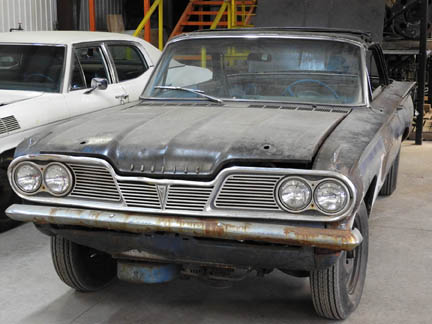 |
|
|
||
|
Sideview | |
|
||
View of the horizontal boiler, which is technically a steam generator as boilers are a large pressure vessel that has potential to blow up. This is looking into the trunk from the inside of the car. The controls and burner are best seen from the back of the car. It is the classic monotube using more or less the Doble design for the pancake and helical coils and quartz rod control system. |
||
|
||
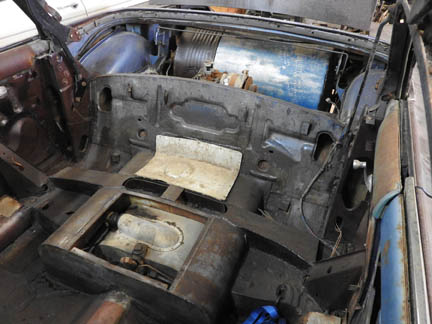 |
View of the inside floor board of the car with the seats out. Engine is the classic 20 hp Stanley, two cylinder double acting 4” bore and 5” stroke slide valve and Stephenson reversing link that also acts as a cutoff control. This Pontiac Tempest was chosen because it had independent suspension, meaning that the original differential and integral transmission were bolted to the floor boards. The stub axles were affixed to the suspension, thus greatly reducing unsprung weight. The Stanley engine, as mounted in a Stanley automobile, is supported in the front by a ball, fitted into a socket, so that it can move up and down and rotate with the rear axle. The original Stanley-made Locomobile had a chain drive from the engine to the axle. This arrangement had been patented by the Stanleys and then sold to the purchasers of the Locomobile company, thus they had to come up with another way of transmitting power from the engine to the wheels, hence the straight cut spur gear on the engine meshing with the same style of gear teeth cut into the ring gear of the differential. This was a long way around the barn to making a steam powered car with good suspension by minimizing the unsprung weight. |
|
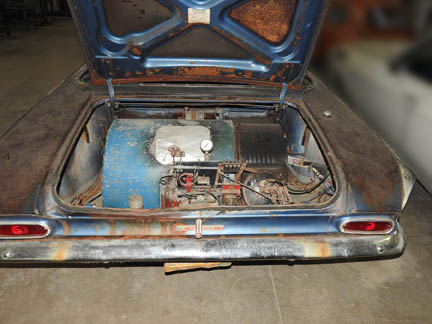 |
||
Boiler in the trunk section Backview |
||
|
||
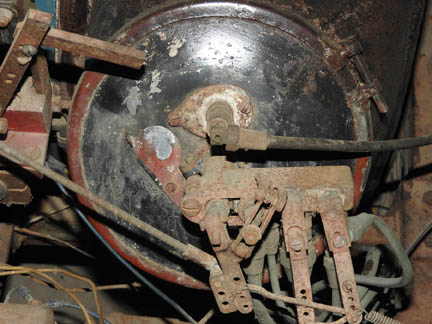 |
These are photos of the controls for the monotube boiler that was made by George Sandin of Northern California. It is identical to the boiler he made for his Studebaker, likewise with a Stanley engine in it. You will notice the various temperature sensors—expanding rods, and the pressurestat—a Bourdon tube. There are numerous holes in the bell cranks for adjustment as experience was gained with this boiler. If you know what to look for you can see in the top right corner of H four microswitches that are actuated by a lever that moves across them. |
|
Above: shows the end of the burner can—air fed in by a squirrel cage blower, spark plug ignition. |
||
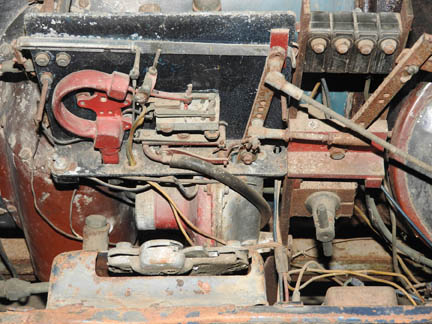 |
||
| Above: shows the bourdon tube and solenoid that controls water flow, with the burner can barely showing at the far right. | ||
|
||
| Engine | ||
|
||
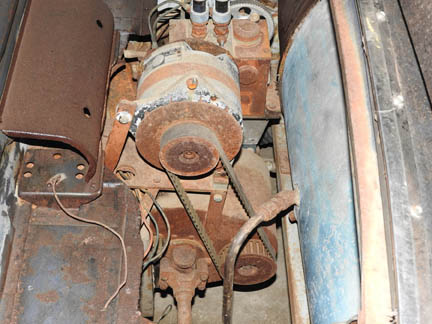 |
||
|
||

